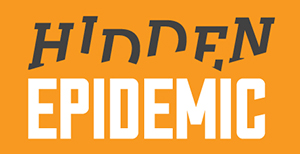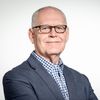 In a David versus Goliath showdown, a small Native American tribe in the Pacific Northwest is challenging one of the country's most powerful and politically well-connected special interests in its mission to improve the oral health of its children.
In a David versus Goliath showdown, a small Native American tribe in the Pacific Northwest is challenging one of the country's most powerful and politically well-connected special interests in its mission to improve the oral health of its children.
The David in this fight is the Swinomish Indian Tribal Community in Washington state's Puget Sound area. The Goliath most likely will surprise you. It's none other than organized dentistry, which over many years has spent millions of dollars on image and public affairs campaigns to cultivate a reputation as the nation's preeminent champion of dental health.
The issue at stake is whether the Swinomish and other Indian tribes, which have the highest rates of cavities and dental disease in the country -- can license and employ mid-level dental practitioners -- similar to nurse practitioners and physician assistants -- to treat members of tribal communities. Despite the fact that the federal government recognized the sovereign rights of Native American tribal nations to govern and self-determine how best to address the needs of their members -- rights that include how to provide care for the health and well-being of their members--the American Dental Association and state dental societies have repeatedly exercised their immense political clout to keep dental therapists from practicing on tribal lands in the "lower 48" states.
The term "lower 48" has significant meaning in this battle. A decade ago, tribes in Alaska won a legal victory that allowed them to train, license and employ mid-levels in the state's tribal communities, many of which are so remote that dentists rarely visit, much less set up practice. Just as newly certified dental health aide therapists (or DHATs as they are called in Alaska) were preparing to start seeing patients after two years of intensive training, the Alaska Dental Society sued not only the tribes but also the young dental therapists.
In an effort to win in the court of public opinion as well as the judicial court, the dental society launched a PR and advertising campaign in an attempt to persuade Alaskans that dental therapists provided care that was second-class and even unsafe. This despite the fact that dental therapists have been providing safe and cost-effective care in 50 other countries for nearly a hundred years.
The campaign proved to be so transparently self-serving and over the top, however, that it actually helped the tribes, so much so that the dental society was forced to settle. Ten years later, the 31 DHATs now practicing in the state provide care to more than 45,000 kids and their families in dozens of Alaska Native villages. Their limited scope of services range from education and preventive care to fillings and uncomplicated extractions.
Reeling from the loss and worried that tribes in the rest of the country would follow Alaska's lead, groups representing the interests of dentists turned their attention to Washington, D.C. Organized dentistry succeeded in getting language quietly inserted into the permanent reauthorization of the Indian Health Care Improvement Act--which was rolled into the Affordable Care Act -- that said tribes outside of Alaska could not employ dental therapists without first getting approval from state officials. As a consequence, the tribes as sovereign governments must now get "permission" from another sovereign government--the states in which they are located.
Although tribal leaders consider that a violation of tribal sovereignty, it nevertheless has kept Native Americans in the lower 48 from even attempting to do what Alaska Natives did.
Until last month, that is.
The charismatic and outspoken chairman of the Swinomish Tribe, Brian Cladoosby, decided to address the oral health needs of his people and recruited one of Alaska's dental therapists to begin serving his community.
With considerable fanfare, which included a traditional native blessing ceremony, the Swinomish on January 4 welcomed Daniel Kennedy, who has six years of experience as a DHAT in Alaska, to their tribe. He began seeing patients that very day, working at the Swinomish Dental Clinic under the general supervision of the clinic's dentist, Dr. Rachael Hogan. And not a minute too soon. The Swinomish dental clinic sees more than twice the number of patients per provider as the national average.
"That's why we are expanding the Swinomish dental team through the proven solution of training and employing culturally sensitive dental therapists," Cladoosby told me in a recent interview. "We cannot understand how anyone can argue against what has been a model program in Alaska. And we cannot understand why the ADA is putting up so many barriers in the lower 48."
At last month's ceremony, he added: "We cannot stand by any longer and allow native people to continue to suffer tooth decay at a rate three times the national average," We have developed a tribal approach to solve a tribal issue. This solution will help our people immediately address their oral health needs in ways that have not been possible until today."
He went on to say that he and other tribal leaders view their action as an exercise of their inherent tribal sovereignty, and he defied the American and Washington State Dental Association to challenge tribes' authority to license and employ dental therapists. They would have no legal standing, in his view. "It would be like the ADA challenging Canada for implementing a DHAT program."
Kennedy will not be the only dental therapist serving the Swinomish community if all goes as planned. The tribe a few months ago sent a young woman from the village to start the training program in Anchorage and Bethel, Alaska.
"The DHAT program has made a big impact in Alaska," Cladoosby said, noting that last year first and second grade students in one community started school with zero cavities for the first time in anyone's memory.
He's optimistic about the dental therapy program in his tribal community. "We want to make ours a model program for all tribes," he said.
One thing is certain: the Swinomish tribe is breaking new ground and will be closely watched by states and tribal communities far and wide. The Oregon Health Authority recently approved two pilot requests from Oregon tribes to employ dental therapists. In addition, several states are now considering allowing dental therapists to practice. Minnesota became the first state other than Alaska to allow them to practice, and Maine last year became the second.
It's just a matter of time before dental therapists will be serving communities just like yours.
Author's Note: This blog post is part of a series examining America's oral healthcare crisis. Be sure to read the previous post, " Is Crony Capitalism a Big Reason for America's Dental Health Care Crisis?."
You can find more about Wendell here.
